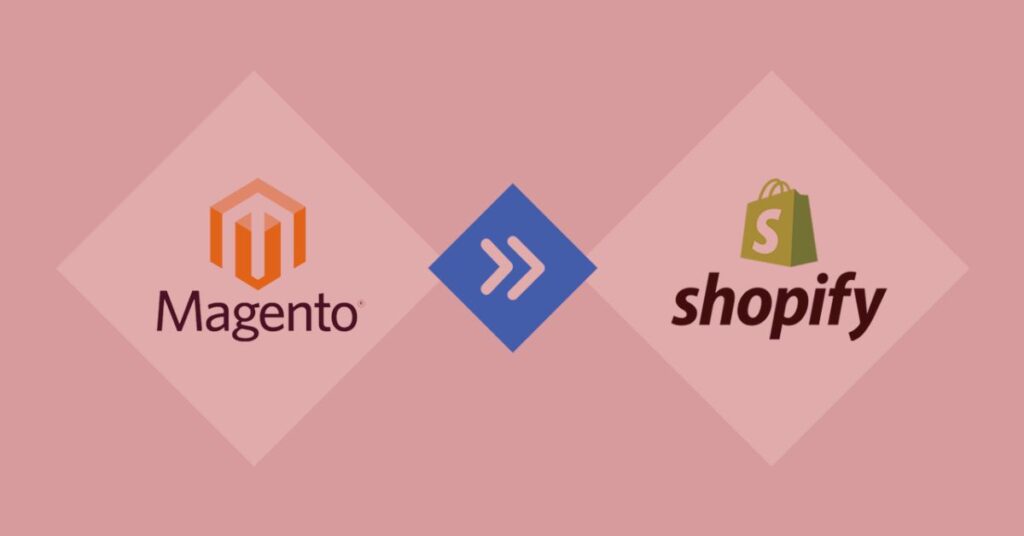The complexity of modern e-commerce product architectures presents unique challenges that test the strategic capabilities of even the most sophisticated organizations. When businesses with bundled and grouped product structures contemplate platform migration, they encounter obstacles that demand not just technical proficiency, but strategic foresight and operational excellence. This challenge represents far more than a simple data transfer—it’s a fundamental transformation that can either unlock new competitive advantages or create operational disruptions that persist long after implementation.
Understanding the Strategic Complexity of Product Architecture
Bundled and grouped products represent sophisticated merchandising strategies that drive customer value and operational efficiency. These structures enable organizations to present complex offerings in intuitive ways while managing inventory, pricing, and fulfillment with precision. The migration of such architectures requires deep understanding of both business logic and technical implementation.
The strategic importance of these product structures cannot be overstated. Bundled products often drive higher average order values, improve customer satisfaction through curated experiences, and optimize inventory management through intelligent grouping. Organizations that successfully migrate these capabilities maintain competitive advantages while those that oversimplify lose critical business functionality.
The challenge intensifies when considering the fundamental differences between platform approaches. Magento’s robust but complex product relationship system contrasts sharply with Shopify’s streamlined architecture. This disparity creates strategic decisions around functionality preservation, operational continuity, and customer experience consistency.
Modern enterprises must recognize that product architecture migration affects multiple stakeholder groups simultaneously. Sales teams depend on bundling capabilities for complex B2B transactions, marketing teams leverage grouped products for campaign effectiveness, and operations teams rely on these structures for efficient fulfillment processes. The migration strategy must address all these requirements simultaneously.
Architectural Differences and Strategic Implications
The fundamental architectural differences between platforms create both challenges and opportunities for forward-thinking organizations. Magento’s native support for complex product relationships enables sophisticated configurations that Shopify handles differently. Understanding these differences enables strategic decision-making around functionality preservation and optimization.
Magento’s bundled product capabilities allow dynamic pricing, optional components, and complex inventory management. These features support sophisticated business models where customers can customize bundles while maintaining inventory accuracy and pricing integrity. The migration challenge involves replicating this functionality within Shopify’s different architectural paradigm.
Grouped products in Magento serve different strategic purposes, often functioning as product category displays with shared characteristics but independent purchasing decisions. This approach supports complex catalog management while simplifying customer navigation. The translation to Shopify requires careful consideration of user experience implications and operational requirements.
The strategic opportunity lies in optimization during migration. Organizations can examine existing product structures, eliminate inefficiencies, and implement more streamlined approaches that leverage Shopify’s strengths while maintaining essential business capabilities. This optimization mindset transforms migration from mere replication to strategic enhancement.
Implementation Strategies for Complex Product Structures
Successful migration of bundled and grouped products requires systematic approaches that balance technical feasibility with business requirements. The implementation strategy must account for customer experience continuity, operational workflow preservation, and long-term scalability requirements.
Bundle reconstruction in Shopify often involves creative solutions using product variants, discount strategies, and third-party applications. These approaches require careful planning to ensure that pricing accuracy, inventory management, and customer experience remain optimal. The technical implementation must support business logic while maintaining platform performance.
Inventory management becomes particularly complex when migrating bundled products. Organizations must establish new systems for tracking component availability, managing stock levels across multiple products, and maintaining accurate fulfillment processes. These operational considerations directly impact customer satisfaction and business efficiency.
The customer experience transformation requires careful attention to purchase flow, pricing transparency, and customization capabilities. Organizations must ensure that migration enhances rather than diminishes the customer journey, particularly for complex purchase decisions that involve multiple product components.
Technology Solutions and Platform Optimization
Modern migration strategies leverage advanced technologies to bridge platform differences and maintain functionality. Application ecosystems, API integrations, and custom development solutions enable organizations to preserve essential capabilities while benefiting from platform improvements.
Shopify’s app ecosystem provides numerous solutions for complex product management, though careful evaluation ensures that chosen applications align with business requirements and performance standards. The selection process should consider long-term viability, integration capabilities, and scalability requirements.
Custom development opportunities enable organizations to implement unique solutions that perfectly match their business requirements. These investments create competitive advantages by enabling functionality that competitors using standard configurations cannot replicate. The development strategy should balance customization with platform update compatibility.
Integration strategies must consider the broader technology ecosystem, including ERP systems, inventory management platforms, and customer relationship management tools. The migration provides opportunities to optimize these connections while ensuring seamless data flow across all business systems.
Risk Management and Quality Assurance
The complexity of bundled and grouped product migration amplifies traditional migration risks while introducing unique challenges related to pricing accuracy, inventory integrity, and customer experience consistency. Comprehensive risk management strategies address these challenges proactively.
Testing protocols must encompass not just data accuracy but also business logic functionality, customer journey completeness, and operational workflow efficiency. The testing approach should simulate real-world scenarios including peak traffic conditions, complex purchase patterns, and exception scenarios.
Rollback strategies become particularly important given the complexity of product structure migration. Organizations must maintain the ability to revert to previous configurations while implementing changes incrementally to minimize disruption. This approach enables continuous refinement without compromising business continuity.
Quality assurance extends beyond technical functionality to include business process validation, customer experience verification, and operational procedure confirmation. The comprehensive approach ensures that migration delivers intended improvements without introducing operational inefficiencies.
Performance Optimization and Scalability
Product structure complexity can significantly impact platform performance if not properly optimized during migration. Organizations must implement strategies that maintain functionality while ensuring optimal loading speeds, search performance, and overall user experience.
Database optimization becomes crucial when dealing with complex product relationships and large inventories. The migration strategy should include performance testing, query optimization, and caching strategies that support both current requirements and future growth projections.
Scalability considerations must account for product catalog expansion, increased transaction volumes, and evolving business requirements. The implemented solutions should support growth without requiring fundamental architectural changes or performance degradation.
The optimization process should consider mobile performance, international markets, and multi-channel integration requirements. These factors increasingly influence customer experience and operational efficiency in modern e-commerce environments.
Business Process Transformation
Migration presents opportunities to optimize business processes around product management, pricing strategies, and customer engagement. Organizations should evaluate existing workflows to identify improvement opportunities that leverage platform capabilities.
Pricing strategy evolution may be necessary to accommodate platform differences while maintaining competitive positioning. This strategic consideration affects revenue optimization, customer perception, and operational complexity. The pricing approach should align with broader business objectives while leveraging platform strengths.
Customer service processes require adjustment to support new product structures and purchase flows. Training programs, documentation updates, and system integrations ensure that customer support teams can effectively assist customers with complex product inquiries and issues.
Marketing strategy adaptation enables organizations to leverage new platform capabilities for promotional campaigns, product discovery, and customer engagement. The migration should enhance rather than constrain marketing effectiveness and campaign flexibility.
Operational Excellence Through Strategic Planning
Successful migration requires operational excellence that encompasses project management, stakeholder coordination, and change management. The complexity of bundled and grouped product migration demands sophisticated planning and execution capabilities.
Resource allocation must account for specialized expertise requirements, extended testing periods, and potential customization needs. Organizations should secure appropriate talent and external partnerships to ensure successful implementation and ongoing optimization.
Timeline management becomes critical given the interdependencies between product structures, business processes, and technical implementations. Realistic scheduling prevents rushed implementations that compromise functionality or create operational disruptions.
Communication strategies ensure that all stakeholders understand migration implications, timeline expectations, and their roles in ensuring successful outcomes. Clear communication prevents misunderstandings that can derail complex migration projects.
Future-Proofing Product Architecture Strategy
Migration decisions should consider not only current requirements but also future business evolution, market changes, and technology advancement. The implemented solutions should support continued growth and adaptation without requiring fundamental restructuring.
Platform evolution planning ensures that chosen solutions remain viable as both business requirements and platform capabilities evolve. Organizations should select approaches that align with platform development roadmaps and industry trends.
Competitive differentiation opportunities emerge from sophisticated product architecture implementation. Organizations that successfully navigate complex migrations while optimizing for performance and user experience create lasting competitive advantages in their markets.
Conclusion
The migration of bundled and grouped products represents one of the most complex challenges in e-commerce platform transitions. Success requires strategic thinking, technical expertise, and operational excellence that transforms potential obstacles into competitive advantages. Organizations that approach this challenge systematically while maintaining focus on business outcomes position themselves for sustained success in increasingly competitive markets.
The complexity of these migrations demands partnerships with organizations that possess deep expertise in both platform capabilities and business strategy. Selecting the right magento to shopify plus migration services ensures that technical implementation aligns with strategic objectives while maintaining operational excellence throughout the transition process.
For organizations committed to achieving migration success while preserving essential business capabilities, partnering with experienced development teams like Devsinc provides the strategic guidance and technical expertise necessary to transform complex product architectures into sustainable competitive advantages in the modern digital marketplace.
Also Read: Rapelusr: The Future of Digital Frameworks Made Simple

